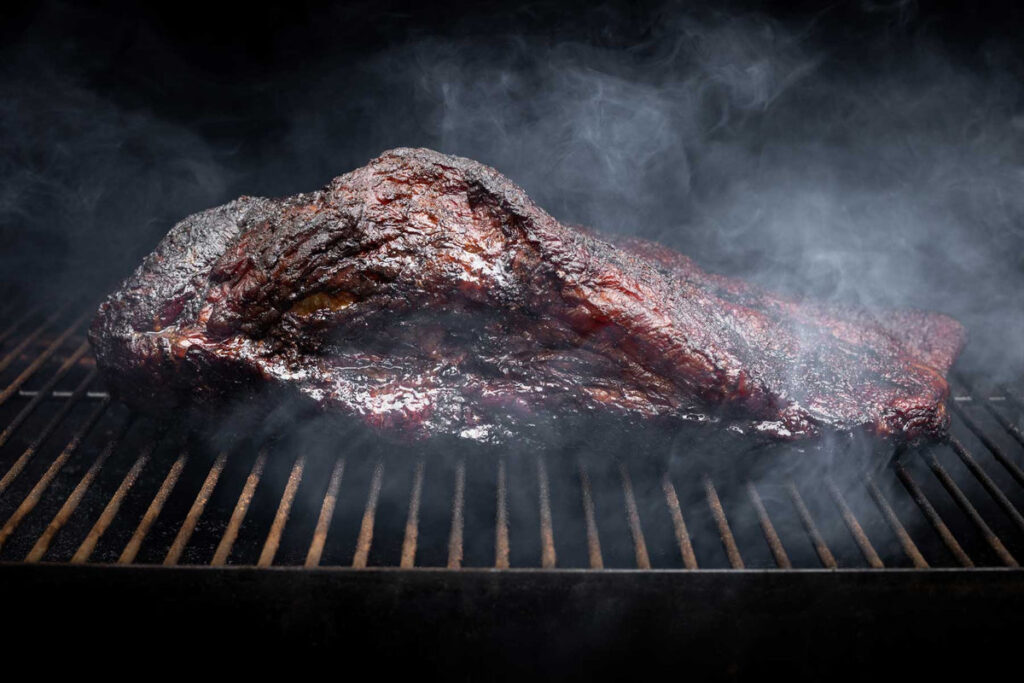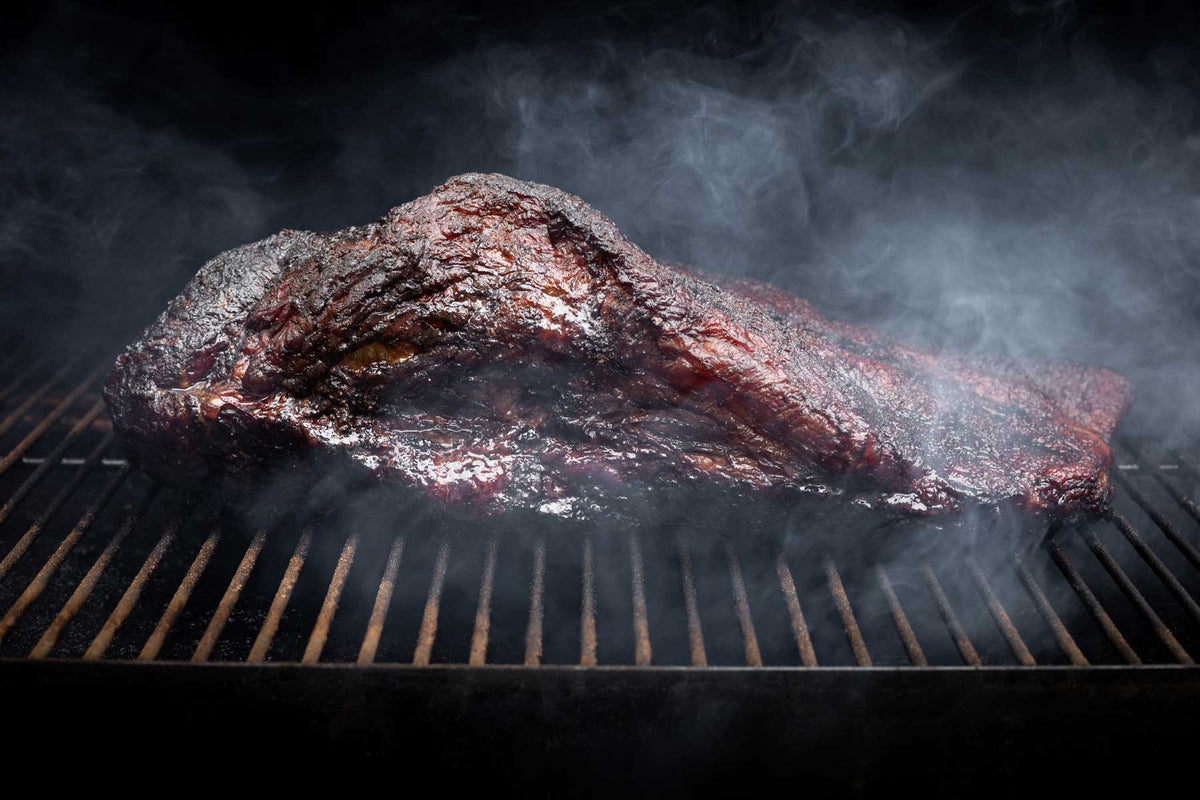
Brisket Fat Side Up or Down: The Ultimate Guide to Smoking Success
The age-old question that plagues pitmasters and backyard BBQ enthusiasts alike: when smoking brisket, should the fat side be up or down? This seemingly simple decision can dramatically impact the final product, determining whether you achieve tender, juicy perfection or end up with a dry, disappointing slab of meat. Understanding the science behind the fat rendering process and how it interacts with the heat source is crucial to making the right choice. This comprehensive guide will delve deep into the arguments for both approaches, providing you with the knowledge to confidently decide whether to position your brisket fat side up or down for your next smoke.
Understanding Brisket Anatomy
Before diving into the specifics of fat placement, it’s essential to understand the anatomy of a brisket. A whole brisket consists of two main muscles: the point (also known as the deckle) and the flat. The point is the thicker, fattier portion, while the flat is leaner and more prone to drying out. A significant layer of fat, often referred to as the fat cap, sits on one side of the brisket. This fat cap plays a vital role in the smoking process, providing flavor, moisture, and protection from the heat.
The Case for Fat Side Up
The traditional argument for smoking brisket fat side up centers around the idea that as the fat renders, it bastes the meat below, keeping it moist and flavorful. This is often referred to as the ‘self-basting’ theory. Proponents believe that the rendered fat slowly melts and penetrates the meat, adding richness and preventing the flat from drying out. They also argue that the fat cap acts as a shield, protecting the meat from the direct heat source.
The Self-Basting Myth Debunked
While the self-basting theory sounds appealing, scientific evidence suggests that it’s largely a myth. Fat molecules are too large to penetrate the muscle fibers of the meat. While some surface fat might redistribute, the majority of the rendered fat simply runs off the brisket, taking valuable flavor with it. Think about it: if fat truly penetrated the meat, the entire brisket would be infused with fat, which isn’t the case.
Potential Benefits of Fat Side Up
Despite the self-basting myth, there are still situations where smoking brisket fat side up might be beneficial. If your smoker has a direct heat source from below, the fat cap can indeed act as a shield, protecting the meat from scorching. This is particularly relevant for offset smokers or smokers where the heat source is close to the meat. Furthermore, if you are using a water pan, the steam created can help to keep the surface of the brisket moist, potentially aiding in fat rendering and preventing a hard bark from forming too quickly. Some also believe that a brisket fat side up presentation looks better, especially for competitions.
The Case for Fat Side Down
The argument for smoking brisket fat side down focuses on maximizing heat absorption and protecting the meat from the heat source. This method is particularly effective in smokers with a consistent heat source from above, such as pellet smokers or kamado grills. By placing the fat side down, the fat cap acts as a barrier between the meat and the heat, preventing the bottom from drying out. It also allows the meat to absorb more of the smoky flavor from the bottom up.
Protecting the Flat
The flat is the leaner portion of the brisket and is more susceptible to drying out. Smoking brisket fat side down provides an extra layer of protection for the flat, helping to retain moisture and prevent it from becoming tough. This is especially important if you’re using a smoker that tends to run hot or if you’re not closely monitoring the internal temperature of the brisket.
Enhanced Bark Formation
Another advantage of smoking brisket fat side down is that it promotes better bark formation on the top of the brisket. The direct exposure to the smoke allows the surface to dry out and form a flavorful, crispy crust. This is highly desirable for many BBQ enthusiasts who appreciate the textural contrast between the tender meat and the crunchy bark. The bark is a key component of a well-smoked brisket, and placing it fat side down can significantly improve its quality.
Factors to Consider When Choosing
Ultimately, the decision of whether to smoke brisket fat side up or down depends on several factors, including:
- Type of Smoker: Consider the heat source and airflow of your smoker. Offset smokers often benefit from fat side up, while pellet smokers and kamado grills may perform better with fat side down.
- Heat Source: If your heat source is direct and intense, fat side up can provide protection. If the heat is more consistent and indirect, fat side down might be preferable.
- Fat Cap Thickness: A thicker fat cap provides more insulation and protection. If your brisket has a thin fat cap, you might want to consider fat side down to prevent drying.
- Personal Preference: Experiment with both methods to see which one produces the results you prefer. There’s no one-size-fits-all answer.
Tips for Smoking Brisket Like a Pro
Regardless of whether you choose to smoke brisket fat side up or down, here are some essential tips for achieving BBQ perfection:
- Trim the Fat: Trim the fat cap to about ¼ inch thick. This allows for better smoke penetration and prevents excessive rendering.
- Use a Quality Rub: Season the brisket generously with a flavorful rub. A simple blend of salt, pepper, garlic powder, and onion powder is a classic choice.
- Maintain a Consistent Temperature: Aim for a smoker temperature of 225-250°F (107-121°C). Consistent temperature is crucial for even cooking.
- Monitor Internal Temperature: Use a reliable meat thermometer to monitor the internal temperature of the brisket. Aim for an internal temperature of 203°F (95°C) in the thickest part of the flat.
- The Texas Crutch: Wrap the brisket in butcher paper or aluminum foil when it reaches the stall (around 150-170°F or 66-77°C). This helps to push through the stall and retain moisture. [See also: How to Wrap Brisket]
- Rest the Brisket: Allow the brisket to rest for at least 1-2 hours before slicing. This allows the juices to redistribute, resulting in a more tender and flavorful product.
Experimentation is Key
The best way to determine whether to smoke brisket fat side up or down is to experiment with both methods and see which one works best for your equipment and personal preferences. Keep detailed notes on your process, including the type of smoker, temperature, cooking time, and results. Over time, you’ll develop a feel for what works best for you and be able to consistently produce delicious, perfectly smoked brisket.
Conclusion: Mastering the Brisket
The brisket fat side up or down debate is a complex one, with valid arguments for both sides. By understanding the science behind the fat rendering process, the characteristics of your smoker, and your own personal preferences, you can make an informed decision and achieve BBQ success. Remember that practice makes perfect, so don’t be afraid to experiment and refine your technique until you consistently produce mouthwatering brisket. Whether you prefer brisket fat side up or prefer your brisket fat side down, happy smoking!

